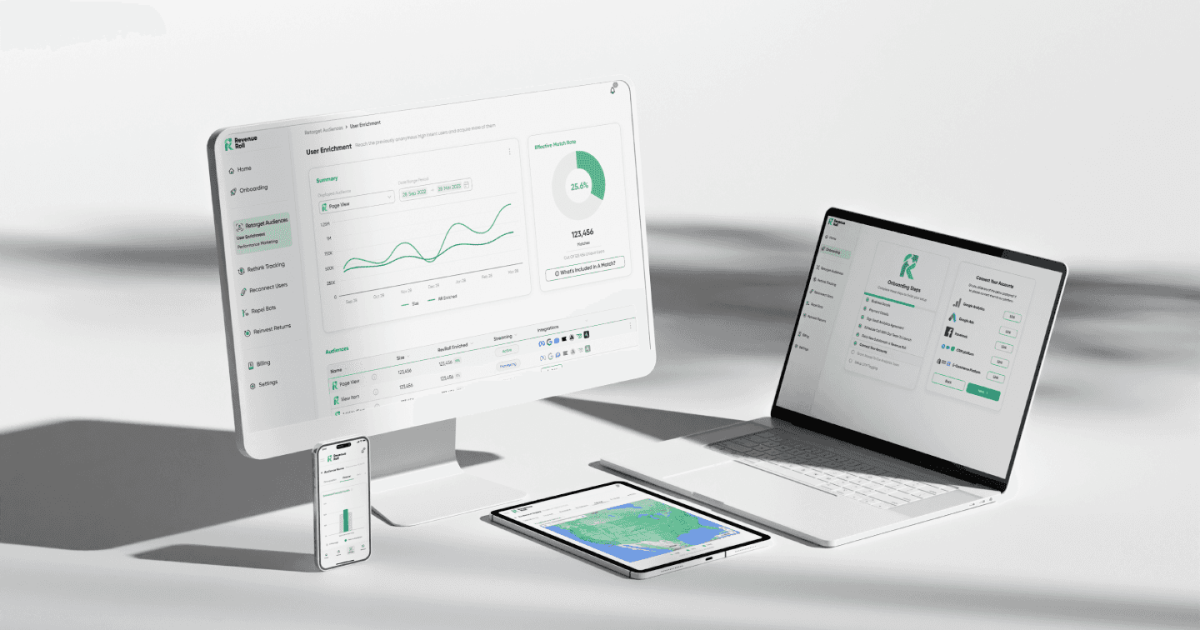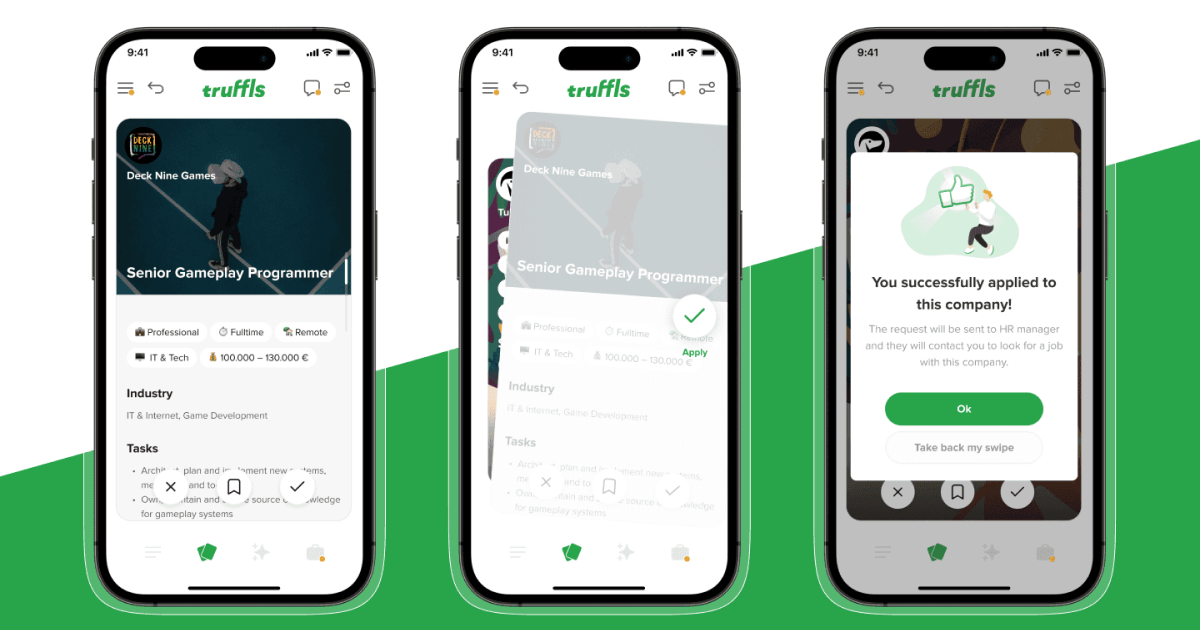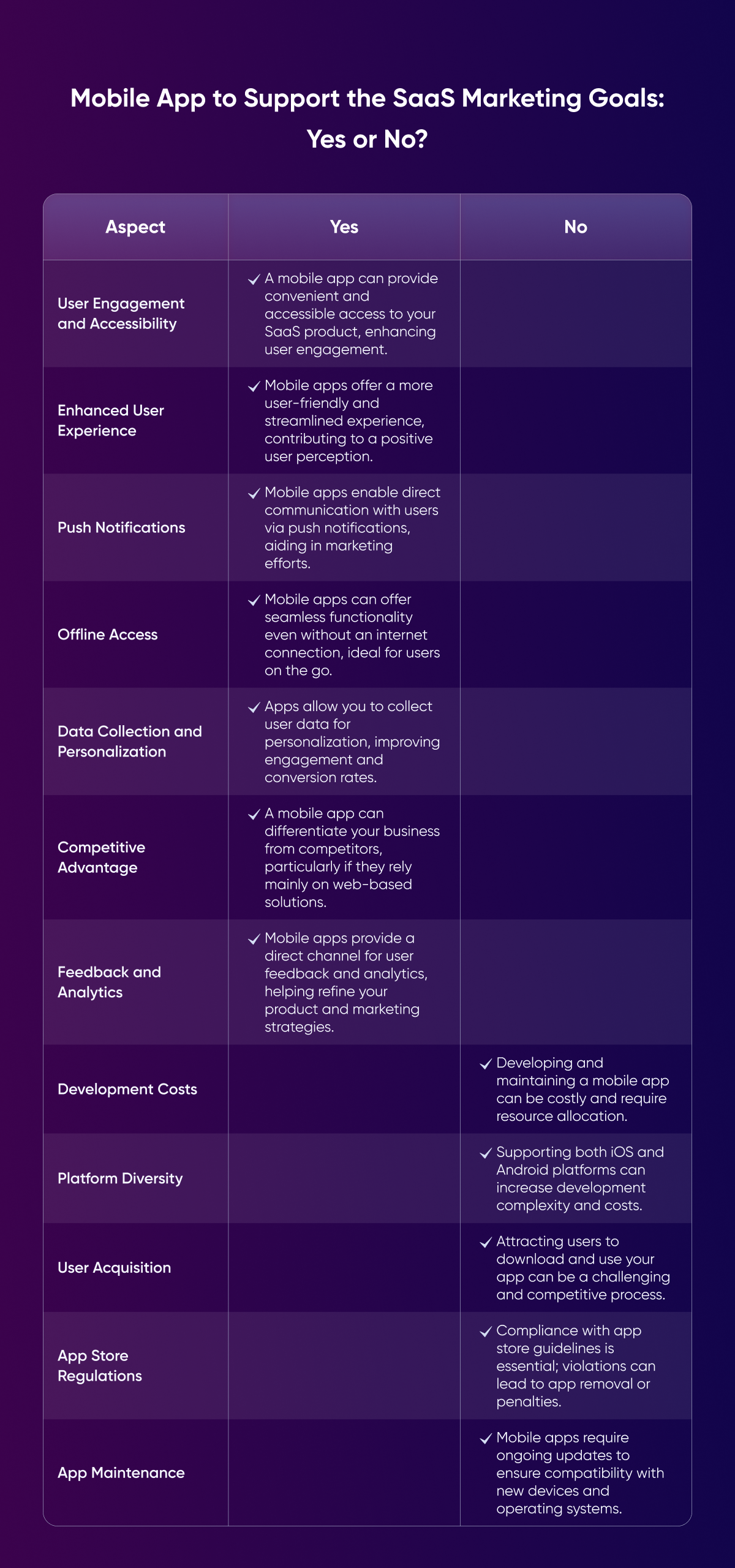Software as a Service (SaaS) has emerged as a favored choice among small businesses for providing scalable and cost-effective solutions. Currently, the global SaaS landscape boasts around 30,000 companies, with the United States spearheading the domain, hosting nearly 60% of these entities and catering to a staggering 54 billion SaaS customers when accounting for repeat users. Notably, Salesforce reigns supreme among SaaS providers with an impressive market share of nearly 10%. Furthermore, according to insights from Exploding Topics, the SaaS market is projected to continue its upward trajectory, reaching an awe-inspiring valuation of $307 billion by 2026.
But what about the necessity of an application for B2B enterprises? Is it truly essential, or can a website alone suffice? This article delves into this critical question.
Is it Worth Developing a SaaS Mobile App?
An application should always carry some value. For example, omnichannel, where a person can contact you or take some action without opening his laptop. Doing it for a tick, while the application does not serve a product purpose, is a waste of time.
Before jumping into app development, it's essential to understand your target audience's preferences and behavior. Ask yourself:
- Are your customers primarily mobile users?
- Do they prefer using mobile apps for specific tasks?
- Does your SaaS product have features that would benefit from mobile access?
If your audience heavily relies on mobile devices or there are features that could be enhanced through a dedicated app, it might be worth considering one.
One example of a famous SaaS business that also has a mobile app is "Slack." Slack is a widely used team collaboration and communication platform that provides businesses with a centralized space for messaging, file sharing, and project management. While Slack primarily operates as a web-based SaaS solution, it also offers a mobile app for both iOS and Android devices. The mobile app allows users to stay connected and engaged with their teams while on the go, ensuring seamless communication and access to important work-related information from anywhere, making it a valuable addition for users who need to stay productive and connected beyond their desktop computers.
Can a SaaS mobile app offer streamlined user experience?
Tech entrepreneurs and software providers cannot afford to cling to outdated practices. The responsibility falls on marketers to distinguish themselves from competitors, and mobile apps emerge as invaluable tools for achieving that distinction. When a SaaS company offers a mobile app, it opens the door to delivering services that are not only smoother, but also faster and more secure for end-users, in stark contrast to those without such an application. Nevertheless, it's crucial for companies to understand that developing a mobile SaaS solution is an ongoing process, not a one-time endeavor. Continuous adjustments, enhancements, and the infusion of fresh content are essential to meet, and ideally exceed, customer expectations. Furthermore, mobile apps serve as a robust platform for SaaS companies to solicit feedback and take actionable steps based on user input. Here's how:
- Mobile-Friendly Interface: Mobile apps are designed with smaller screens in mind, which often leads to more user-friendly and intuitive interfaces tailored to touch interactions. This can result in a smoother and more user-friendly experience for tasks commonly performed on mobile devices.
- Offline Access: Mobile apps can be designed to provide limited offline access to essential features and data, allowing users to continue working or accessing information even when they're not connected to the internet. This is a significant advantage for users who need to work on the go.
- Native Features: Mobile apps can leverage native device features such as GPS, camera, push notifications, and gestures, enhancing the user experience by providing features that may not be available in a web-based SaaS version.
- Faster Load Times: Mobile apps can load faster since they store data and resources locally on the device. This can reduce wait times and contribute to a smoother user experience.
- Customization: Mobile apps can offer a more personalized and customized experience, allowing users to set preferences and receive tailored content or notifications, which can enhance the overall user experience.
- Improved Performance: Mobile apps can be optimized for specific mobile platforms (iOS, Android), resulting in improved performance and responsiveness, which contributes to a smoother and more enjoyable user experience.
Careful planning, user research, and user-centric design are essential to ensure that a SaaS mobile app indeed offers a streamlined and user-friendly experience for your target audience.
As an illustration, let's consider a recent project we were involved in – the development of a website for a burgeoning SaaS startup known as RevenueRoll. The fundamental mission of RevenueRoll revolves around equipping businesses with essential tools to optimize their revenue streams and make well-informed decisions. In this specific case, the role of a mobile app was not deemed crucial. After careful consideration, we opted for a responsive design approach that seamlessly adapts to various devices while preserving the user experience.

On the flip side, we ventured into a distinctly different SaaS endeavor – one that functions exclusively as a mobile application. Allow us to introduce Truffls, a mobile job search app rooted in Germany, offering a swift and enjoyable job-hunting experience. It employs a swipe-based system, akin to popular dating apps like Tinder, enabling users to efficiently browse job openings. Users can effortlessly explore comprehensive job details and delve into company profiles, creating a user experience reminiscent of swiping right and left on a dating app.

SaaS offerings can vary significantly, and the choice between a website or a mobile app often hinges on the distinct preferences and needs of the target audience. Whether it's analytical data typically accessed via a website or the convenience of conducting a lightweight job search, even during a subway commute, the ideal solution is ultimately shaped by the unique demands of your users.
Mobile Application for Marketing Goals: Is it Worth it?
Creating a mobile application to support your SaaS marketing goals can be a valuable investment, but its worthiness depends on several factors and considerations. Let's explore whether developing a mobile app aligns with your SaaS marketing objectives.

If your audience is mobile-centric and you have the resources to invest in app development and ongoing maintenance, a well-executed mobile app can enhance user engagement, improve user experience, and contribute to the success of your SaaS marketing efforts.
Before making a final decision, it's essential to conduct thorough market research, gather user feedback, and assess the potential benefits against the costs and resources required.
If you doubt what exactly you need - no problem. You can contact us for a free consultation with our cofounder and Stanford MBA’25. During the call, you can discuss your goals and wishes, and ask questions that interest you. Our experience encompasses collaborations with over ten SaaS projects spanning various categories, and we stand ready to provide guidance and support as you embark on your journey.




